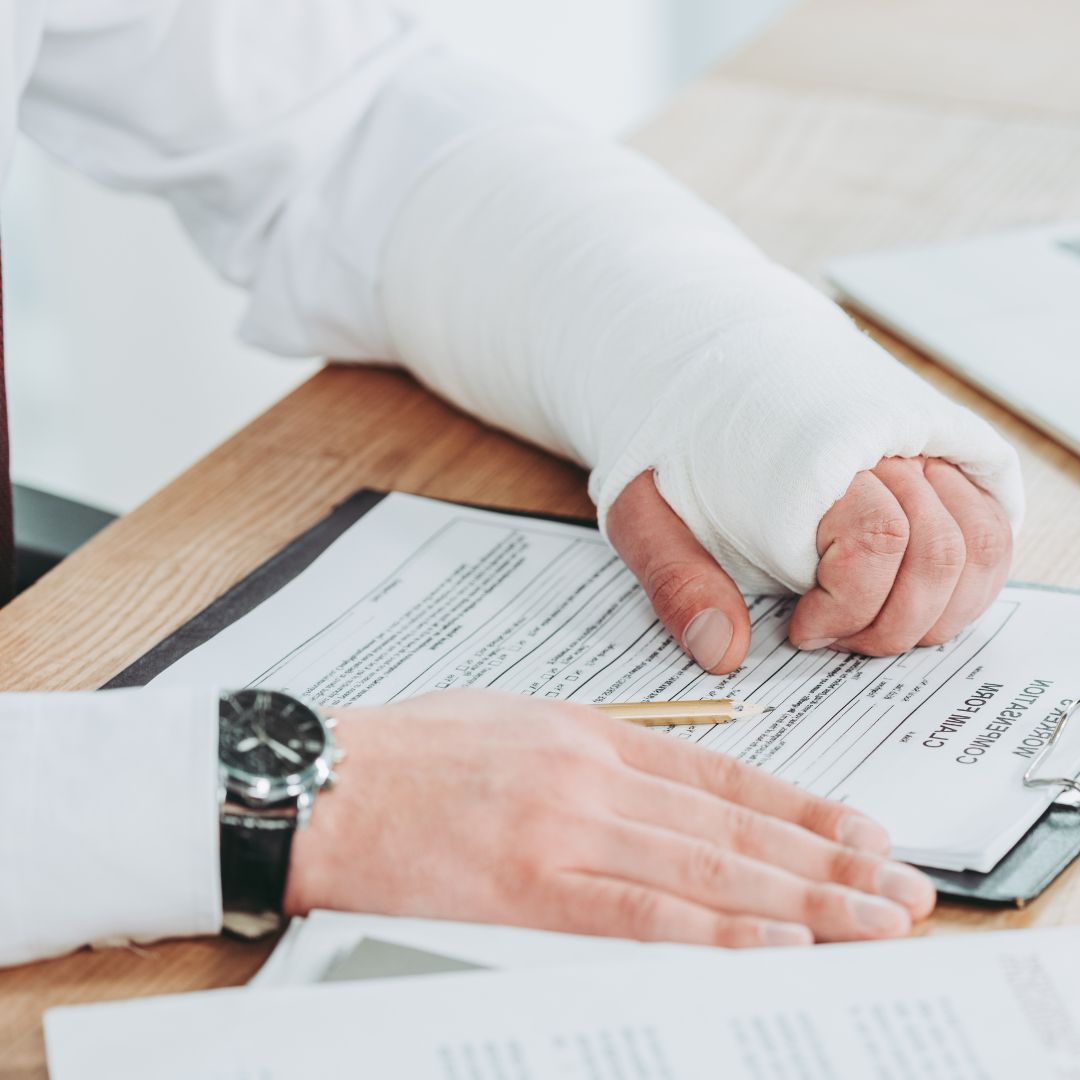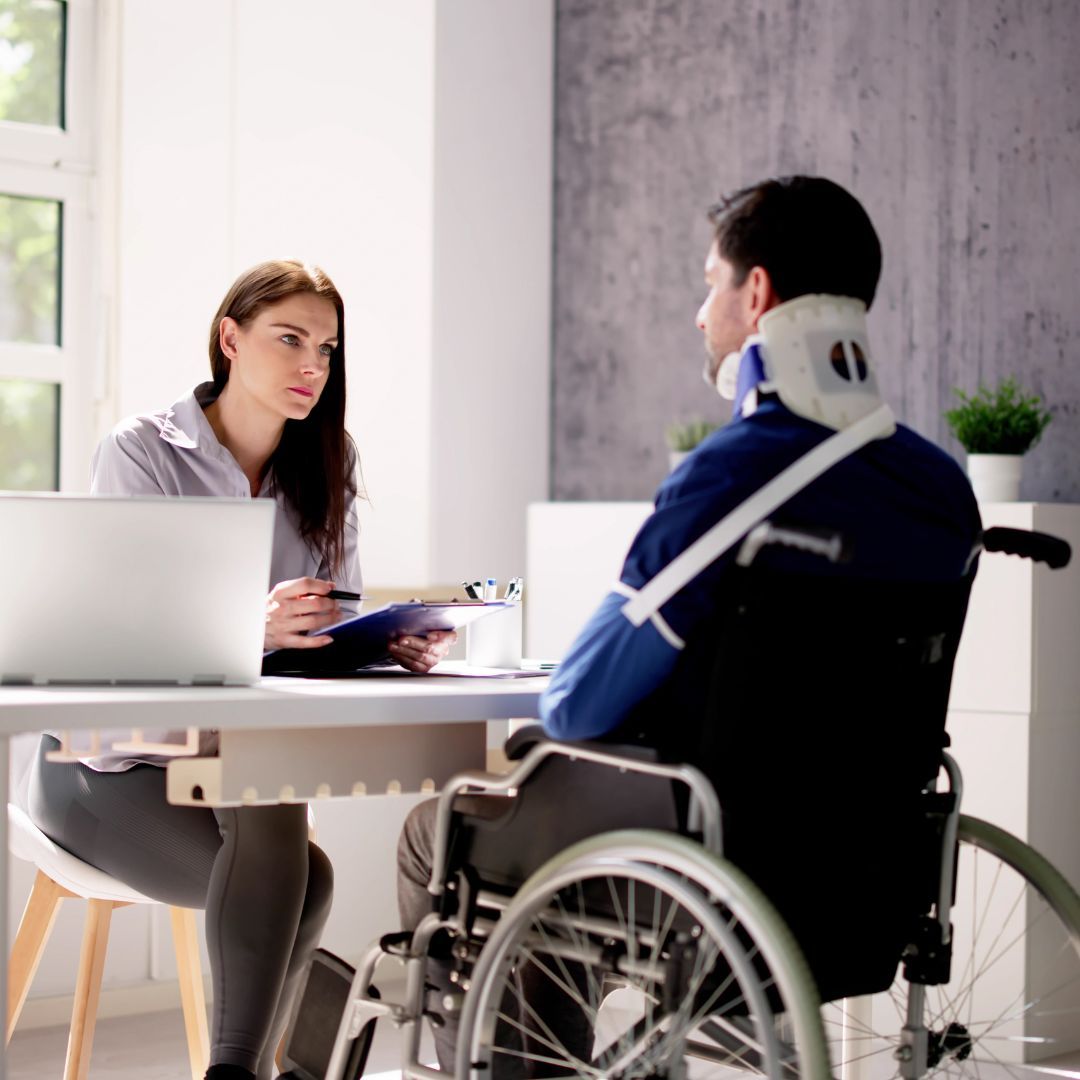Workers Comp Insurance for Photographers
Index
Understanding Workers Comp Insurance
Key Features of Workers Comp Insurance
Cost of Workers Comp Insurance for Photographers
How to Choose the Right Workers Comp Insurance
Claims Process for Workers Comp Insurance
Contact Us
Phone
886-226-4436
Location
9340 Bolsa Ave, Westminster, CA 92683
As a photographer, it is important to consider a variety of factors that can impact your business. One aspect that should not be overlooked is workers' compensation insurance. Understanding the basics of workers' comp insurance and its importance for photographers is crucial for safeguarding your business and protecting your employees.
Understanding Workers Comp Insurance
Workers compensation insurance is a form of insurance coverage that provides medical and wage replacement benefits to employees who are injured or become ill in the course of their employment. For photographers, this means that if one of your employees sustains an injury while on a photoshoot or becomes ill due to workplace-related factors, workers' comp insurance will provide the necessary financial support.
Basics of Workers Comp Insurance
Workers' compensation insurance is a no-fault system, which means that regardless of whether the injury or illness was caused by the employee's actions or the employer's negligence, benefits are still provided. This coverage typically includes medical expenses, disability benefits, rehabilitation services, and lost wages.
When it comes to workers' compensation insurance, it is important to understand the various components that make up the coverage. Medical expenses, for example, encompass a wide range of costs, including doctor visits, hospital stays, surgeries, medications, and physical therapy. By having workers' comp insurance, photographers can ensure that their employees receive the necessary medical treatment without incurring significant out-of-pocket expenses.
Disability benefits are another crucial aspect of workers' comp insurance. In the event that an employee is unable to work due to a work-related injury or illness, disability benefits provide a portion of their lost wages. This financial support helps to alleviate the financial burden on the employee and allows them to focus on their recovery without worrying about their income.
Rehabilitation services are also covered by workers' comp insurance. These services can include physical therapy, occupational therapy, and vocational rehabilitation, depending on the needs of the injured employee. By providing access to these services, photographers can help their employees regain their physical abilities and return to work as soon as possible.
Lost wages are a significant concern for employees who are unable to work due to a work-related injury or illness. Workers' comp insurance ensures that employees receive a portion of their wages while they are unable to work, helping to alleviate financial stress and maintain their standard of living.
Importance of Workers Comp Insurance for Photographers
As a photographer, you may not think that injuries are common in your line of work. However, accidents can happen unexpectedly, and having workers' compensation insurance in place can protect both you and your employees. It provides peace of mind, ensuring that you are prepared for any unforeseen circumstances that may arise during photoshoots or other work activities.
Moreover, workers' comp insurance helps to maintain a positive working environment. By demonstrating that you prioritize the wellbeing of your employees, you can attract and retain skilled individuals who feel valued and secure in their positions.
In the fast-paced world of photography, accidents can occur in a variety of ways. From trips and falls during outdoor shoots to repetitive strain injuries from carrying heavy equipment, the risks are present. Workers' comp insurance not only provides financial protection but also shows your employees that you are committed to their safety and well-being.
Furthermore, workers' comp insurance can also protect photographers from potential legal liabilities. In the event that an employee is injured and decides to pursue legal action, having workers' comp insurance can help cover legal expenses and potential settlements, minimizing the financial impact on your business.
By investing in workers' comp insurance, photographers can create a safer and more secure work environment for their employees. It is a proactive measure that demonstrates your commitment to their welfare and can ultimately contribute to the overall success of your business.
Key Features of Workers Comp Insurance
When considering workers' comp insurance as a photographer, it is important to be aware of its coverage details and policy limitations. This knowledge will enable you to make informed decisions about the level of protection you need for your business and employees.
As a photographer, your work environment can present unique risks and challenges. Whether you're capturing breathtaking landscapes or photographing important events, accidents can happen at any time. That's where workers' compensation insurance comes in, providing you with the peace of mind that you and your employees are protected.
Coverage Details
Workers' compensation insurance typically covers a broad range of injuries and illnesses that occur in the workplace. This may include accidents during photoshoots, such as trips or falls, injuries caused by equipment malfunctions, or even repetitive strain injuries from editing photos for long periods of time.
Imagine you're on a location shoot, capturing the beauty of nature. Suddenly, you stumble and twist your ankle. With workers' comp insurance, you can rest assured that your medical expenses will be covered, allowing you to focus on your recovery without worrying about the financial burden.
Additionally, if one of your employees accidentally drops a camera and injures themselves in the process, workers' comp insurance will provide them with the necessary medical treatment and wage replacement while they recover. This not only protects your employees but also safeguards your business from potential lawsuits.
Policy Limitations
While workers' comp insurance provides valuable protection, it is important to be aware of its limitations. Some policies may have exclusions for certain types of injuries or illnesses, such as pre-existing conditions or injuries sustained while participating in illegal activities.
For instance, if you have a pre-existing back injury and aggravate it while setting up your photography equipment, your claim may be denied. It's crucial to thoroughly review the terms of the policy to understand any potential limitations and exclusions.
Furthermore, workers' comp insurance typically covers injuries and illnesses that occur within the scope of employment. This means that if you or your employees engage in activities unrelated to work, such as personal photography projects, injuries sustained during those activities may not be covered.
Understanding these limitations will help manage expectations and ensure that you choose a policy that best suits your business's specific needs. It's always wise to consult with an insurance professional who can guide you through the process and help you find the right coverage for your photography business.
Cost of Workers Comp Insurance for Photographers
The cost of workers' comp insurance for photographers is influenced by various factors. Understanding these factors and exploring ways to reduce insurance costs can help you make informed decisions when it comes to selecting a policy.
As a photographer, it is essential to protect yourself and your employees from the potential risks and liabilities that can arise in the course of your work. Workers' comp insurance provides coverage for medical expenses, lost wages, and rehabilitation costs in the event of an employee's work-related injury or illness. However, the cost of this insurance can vary depending on several key factors.
Factors Influencing the Cost
Several factors can impact the cost of workers' comp insurance for photographers. These include the number of employees you have, your industry classification code, your claims history, and the state in which you operate your business. Insurance providers will assess these factors to calculate the premium you will need to pay for coverage.
The number of employees you have is a significant factor in determining your insurance costs. The more employees you have, the higher the risk of a work-related injury occurring. Insurance providers consider the size of your workforce when calculating your premium, as larger companies may have a higher likelihood of claims.
Your industry classification code is another crucial factor. Insurance companies use these codes to classify different types of businesses based on the level of risk associated with their operations. Photographers may fall under various classification codes, depending on the nature of their work. For example, if you primarily photograph weddings and events, your code may be different from a photographer who specializes in aerial photography.
Your claims history also plays a role in determining your insurance costs. If you have a history of frequent or severe claims, insurance providers may view your business as higher risk and charge higher premiums. On the other hand, a clean claims history can help lower your insurance costs.
Lastly, the state in which you operate your business can significantly impact your workers' comp insurance costs. Each state has its own regulations and requirements for workers' comp coverage, and insurance rates can vary accordingly. Some states have higher minimum coverage limits or more stringent regulations, which can result in higher premiums.
Ways to Reduce Insurance Costs
Although workers' comp insurance is a necessary investment for photographers, there are strategies to help minimize costs. One approach is to prioritize workplace safety and implement effective risk management practices. By creating a safe working environment, you can reduce the likelihood of accidents or injuries, which may result in lower insurance premiums.
Implementing safety measures such as providing proper training for employees, maintaining equipment regularly, and enforcing safety protocols can help mitigate risks and demonstrate your commitment to workplace safety. Insurance providers often offer discounts or lower rates to businesses that have proactive safety programs in place.
Additionally, shopping around and comparing quotes from different insurance providers can help you find the most competitive rates. Each insurance company has its own underwriting criteria and pricing models, so obtaining multiple quotes allows you to compare options and select the policy that best fits your needs and budget.
Working with an experienced insurance broker who specializes in photographers' coverage can also be beneficial. These brokers have in-depth knowledge of the industry and can identify policies tailored to your specific needs. They can also negotiate favorable terms on your behalf, potentially securing lower premiums or additional coverage benefits.
In conclusion, the cost of workers' comp insurance for photographers is influenced by factors such as the number of employees, industry classification code, claims history, and state regulations. Implementing workplace safety measures and shopping around for competitive quotes can help reduce insurance costs. Working with a specialized insurance broker can further enhance your ability to find the right coverage at the best possible price.
Workers’ Compensation Insurance for Photographers
Running a photography business comes with creative rewards—but also responsibilities. One of the most important is making sure you have the right photographer insurance in place. For many professionals, this includes workers’ comp insurance for photographers, which may be required by law depending on your state and whether you employ staff.
Do Photographers Need Workers’ Comp Insurance?
Photographers with employees:
- If you hire photography assistants, second shooters, or office staff, most states require you to carry workers’ compensation insurance. This coverage protects your team by paying for medical bills and lost wages if they’re injured or become ill on the job. It also protects your photography business from costly lawsuits.
- Independent contractors:
In most cases, photographers aren’t required to cover independent contractors with workers’ comp. However, misclassifying employees as contractors is a common mistake. If a contractor is injured while working for you, a court could decide they were actually an employee—leaving you financially liable. - Self-employed photographers (no employees):
Sole proprietors and single-member LLCs are often not required to carry workers’ compensation. Still, many photographers choose to purchase optional coverage. Having your own workers’ comp policy can protect your income if you’re injured on the job and can’t work. Some photographers also add accident or disability insurance for extra protection. - Meeting client requirements:
Some venues and corporate clients require proof of photography business insurance, including workers’ comp, even if you’re a solo photographer. Having the right coverage in place can help you secure contracts and look more professional.
Why Workers’ Comp Is Important for Photographers
Photographers face unique risks on the job, from outdoor shoots to long editing sessions. Workers’ comp coverage can protect your business in scenarios like:
- An assistant tripping over equipment during a wedding shoot.
- A team member straining their back while setting up heavy lighting.
- Repetitive stress injuries from hours of editing and computer work.
Without coverage, these situations could lead to lawsuits, unexpected medical costs, or income loss for both you and your team.
How to Get Workers’ Comp Insurance for Your Photography Business
The cost of workers’ comp insurance for photographers depends on your location, payroll, and number of employees. To find the right coverage:
- Review your needs: Confirm whether your state requires workers’ comp for your business structure.
- Compare quotes: Request tailored quotes from trusted providers like Travelers, Next Insurance, or Progressive Commercial.
Bundle coverage: Consider a
Business Owner’s Policy (BOP) to save money. A BOP can combine
workers’ comp, general liability, and commercial property insurance into one cost-effective package.
Claims Process for Workers Comp Insurance
In the unfortunate event that an employee is injured or becomes ill while on the job, knowing the steps to file a claim and what to expect after filing can help streamline the process and provide the necessary support.
Steps to File a Claim
If an employee sustains an injury or illness that they believe is work-related, it is crucial to notify them of the steps they need to take to file a workers' comp claim. This typically involves reporting the incident to their supervisor or employer, seeking necessary medical treatment, and completing any required claim forms. Working closely with your insurance provider can help ensure that the claim is properly handled and processed promptly.
What to Expect After Filing a Claim
After filing a workers' comp claim, the employee can expect their case to be reviewed by the insurance provider. If the claim is approved, they will receive the necessary medical treatment and benefits as specified by the policy. In some cases, the insurance provider may conduct an investigation to verify the legitimacy of the claim. Throughout this process, open communication and transparency between all parties involved can help facilitate a smooth resolution.
By understanding the ins and outs of workers' compensation insurance for photographers, you can protect your business, your employees, and yourself. Take the time to evaluate your specific needs, research different insurance providers, and implement strategies to reduce costs. By prioritizing workplace safety and being prepared for any incidents, you can focus on what you do best: capturing moments and creating stunning photographs.
What kind of insurance do photographers need?
Photographers typically need several types of insurance to protect themselves and their business. The most common and important types include:
- General Liability Insurance: This covers third-party injuries or property damage that might occur during a photo shoot, such as a client tripping over equipment or damage to property.
- Professional Liability Insurance (Errors & Omissions): This protects photographers against claims of negligence, mistakes, or failure to deliver the agreed-upon services or products. For example, if a photographer fails to deliver images or there's a dispute over the work's quality, this insurance can help cover legal fees.
- Equipment Insurance: Photographers rely on expensive cameras, lenses, and other equipment. This insurance covers theft, loss, or damage to equipment, whether it's at the studio, in transit, or on location.
- Workers' Compensation Insurance: If the photographer has employees or freelancers working for them, this insurance is important. It covers medical expenses and lost wages for employees who are injured while working.
- Commercial Property Insurance: This covers physical assets such as cameras, computers, and other equipment if they are damaged or destroyed due to events like fire, theft, or natural disasters.
- Business Interruption Insurance: This can cover loss of income in case the photographer’s business is disrupted due to an unexpected event like equipment failure or natural disaster.
- Cyber Liability Insurance: With more photographers storing client images and business records digitally, this type of insurance helps protect against data breaches or cyber-attacks.
How much is liability insurance for a photographer?
What Affects the Price
Here are the key variables that change how much you’ll pay:
Coverage Limits
Higher amounts of liability (for bodily injury, property damage, legal defense) cost more. For example, $1 million per incident vs $2 million aggregate will cost more.
Deductible
The amount you agree to pay before insurance kicks in. Higher deductibles → lower premiums.
Geographic Location
Laws, legal risk, pricing norms differ a lot by country/state/region.
Type of Photography Work
Shooting weddings (lots of people, high liability) is more risky than e.g. product photography in a studio. More risk = higher cost.
Number of Events or Frequency
If you do many shoots, or your business is full-time, cost tends to be higher than if you're doing occasional events or part-time.
Equipment Value
If you want your insurance to also cover damage/theft of gear (especially expensive gear), that raises the cost. If just liability (injury / damage to others), cost is lower.
Claims History
If you've had lawsuits or liability claims before, insurance will cost more.
Additional Insured / Certificates
Sometimes clients or venues want you to add them to your liability policy; that can add cost.
What Might Liability Insurance Cost in Pakistan?
I don’t have exact current data for Pakistan, but making an educated guess:
Basic liability insurance (for small-scale photographer, occasional events, low gear value) might cost a few tens of thousands in PKR annually. For example, maybe PKR 20,000-60,000/year or more, depending on coverage and risk.
If you add expensive gear, more coverage, or do many events, premium could go up substantially (maybe PKR 100,000-200,000+ or more per year).
It really depends on insurance providers in Pakistan, whether they license specific policies for photographic liability, local legal requirements, etc.
Does State Farm offer photography insurance?
Yes, State Farm offers insurance coverage tailored for photography businesses. Their policies can help protect your photography business and its assets, allowing you to focus on your craft.
Key coverages include:
- Property Insurance: Protects your business space and furnishings, whether you own or rent.
- Commercial Articles Insurance: Covers cameras, lenses, flashes, and other equipment against theft or damage, even when offsite.
- General Liability: Assists with legal expenses if someone is injured in your studio or if you damage property during a shoot.
- Loss-of-Income Insurance: Helps maintain your income if your business operations are disrupted due to a covered claim.
- Hired Auto Coverage: Provides coverage when renting vehicles for photo shoots away from your primary location.
How do freelance photographers get health insurance?
1. Health Insurance Marketplace (Affordable Care Act)
Freelancers can buy insurance directly through the federal or state Marketplace at HealthCare.gov
.
You can compare plans by price, coverage, and provider networks.
Income-based subsidies (premium tax credits) can lower monthly costs.
2. Professional Associations & Unions
Some organizations for creatives and freelancers offer access to group health plans, for example:
Professional Photographers of America (PPA)
Freelancers Union (offers plans in some states)
These can sometimes give better rates than going solo.
3. Private Insurance Brokers
Photographers can also work with insurance brokers to find individual or family plans outside of the Marketplace.
Brokers help compare plans across different insurers.
Useful if you want specific coverage options not offered through ACA exchanges.
4. Spouse or Partner’s Employer Plan
If a spouse or domestic partner has employer-sponsored insurance, freelancers can often join that plan.
5. Medicaid & CHIP
If income is low enough, photographers may qualify for Medicaid (for adults) or CHIP (for children). Eligibility depends on the state and household size.
6. Short-Term or Alternative Plans
Some freelancers choose short-term health insurance or health care sharing ministries, but these are not comprehensive ACA plans. They may be cheaper, but coverage is limited and they can deny preexisting conditions.
REQUEST A QUOTE
Speak with a CA Workers Compensation Insurance specialist today!
Get started today!
Prefer to speak with an agent now?
Call: (866) 226-4436
Workers Compensation Insurance
Learn More About Workers Comp. Insurance











